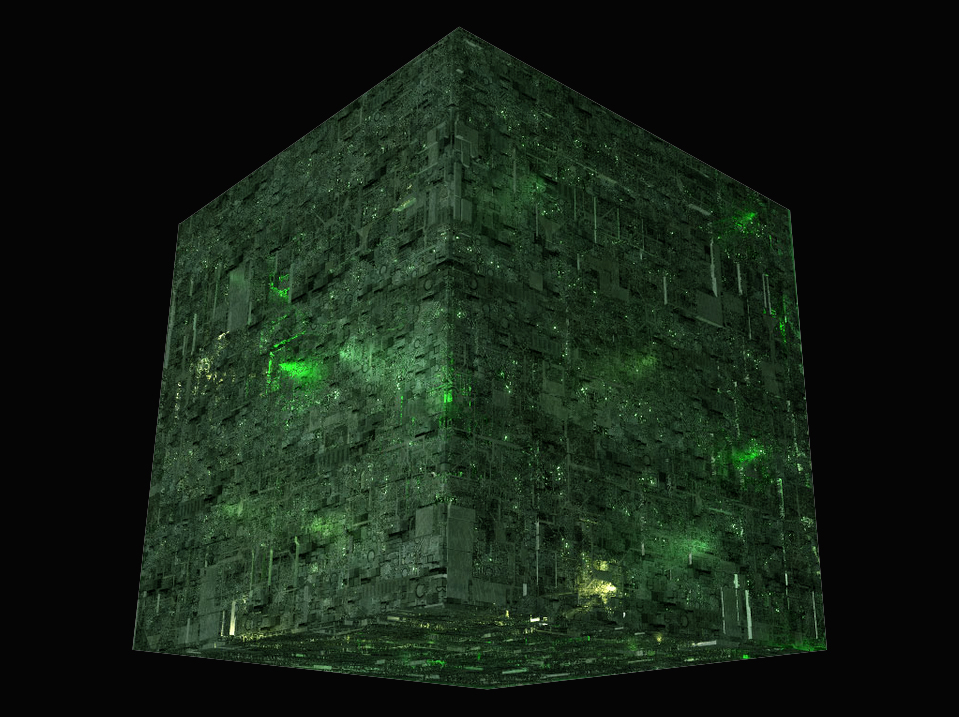David Stairs

Paramount
“We Are the Borg.”
With these words, Maurice Hurley, writing for the Star Trek TNG episode Q Who?, unleashed one of television’s most implacable adversaries on the world. But, as with much speculative fiction, Hurley and his co-writers were only mining the literature of science and engineering probability.
When the episode first aired in 1991 we were already waist-deep in Terminators, Robo Cops, and Six-Million Dollar Men. Men had been playing God with Golems since before Mary Shelly patched Victor Frankenstein’s creation together in 1818, and cyborgs had been clanking about from the time of L. Frank Baum’s Tin Woodsman (1910) and Karl Kapek’s Rossum’s Universal Robots (1919). The Borg were no different.
Donna Harraway’s Cyborg Manifesto (1985) and Ray Kurzweil’s The Age of Intelligent Machines (1990) had set the stage for dystopian adversaries, like the Borg, but few could see far enough into the future to anticipate what was before their very noses, and has become truism thirty years further on.
Yet, the great granddaddy of prognosticators was neither Mary Shelly, nor any of the Hugo Award winners of the past 50 years. That distinction goes to a Victorian social philosopher named Samuel Butler, whose late 19th century morality tale, Erewhon, predicted so many future twists and turns.
Butler had worked at a sheep station on New Zealand in the 1870s, and set his tale in a land whose name was an anagram for “nowhere” in the very place Peter Jackson chose to film his Tolkein Middle Earth trilogy. But more than its antipodal setting, Erewhon is remembered for equating illness and crime, for proposing a world in which children choose their parents, and for postulating a society that chose to put a brake on technology before it became too smart or too dangerous for civilization.
Despite what has been written since about intelligent machines, our AI, our robotics and our big data are only as perceptive as the humans who designed them. Consequently, we’re still surrounded by pretty dumb machines. Faster and less prone to tire than humans perhaps, but no smarter.
As we enter more daringly into the realm of what’s called Post- or Transhumanism, we’d do well to reflect on the past. The “quantified self,” one that measures and records every step, each movement, and eventually every thought is already a reality for many. The dependence upon Fitbits and iPhones that has lead to the documentation of new illnesses and addictions in the American Psychological Association’s Diagnostic and Statistical Manual of Mental Disorders (DSM-5) implies that some will not need cybernetic implants to qualify as “transhuman.” Disorder indeed.
I want to assert that designations like trans- and post- human are not only hyperbolic, but maybe even anachronistic, considering the state of the world. While some might consider Jeri Ryan’s Seven-of-Nine before she was severed from the collective to be the quintessential Borg, I propose that being a cyborg is more a state of communing with a “hive-mind” than of cybernetic implants, one that a majority of humans may have already adopted.
The wholesale abandonment of privacy and independently controlled data for the hive-mind convenience of social media and phone apps is so widespread as to make the notion of cyborgs seem quaintly old-fashioned, Buck Rogers meets Steve Rogers by way of Roy Rogers, or perhaps a new manifestation named Katniss Rogers.
In other words, the future, so breathlessly anticipated, is already here, while the past, so shamelessly replicated, holds all humanity’s stories as open secrets. Not to worry though, whether you groove to the Borg’s cube-in-space version of the rectilinear universe or not, there’s no problem with being assimilated. If you are a genetic permutation of the human race, you are already a card-carrying member of the collective.

Look into your Borg mirror and recharge
The poet wrote, “The fault, …., is not in our stars, But in ourselves.” Whether, along with technological apologists, you believe technology can change the future is immaterial. Human genetics, despite the Genome Project and CRISPR, is still a four-billion year experiment of planetary evolution. Resistance isn’t really an issue. You don’t even have to comply; you were born compliant.
David Stairs is the founding editor of the Design-Altruism-Project.










